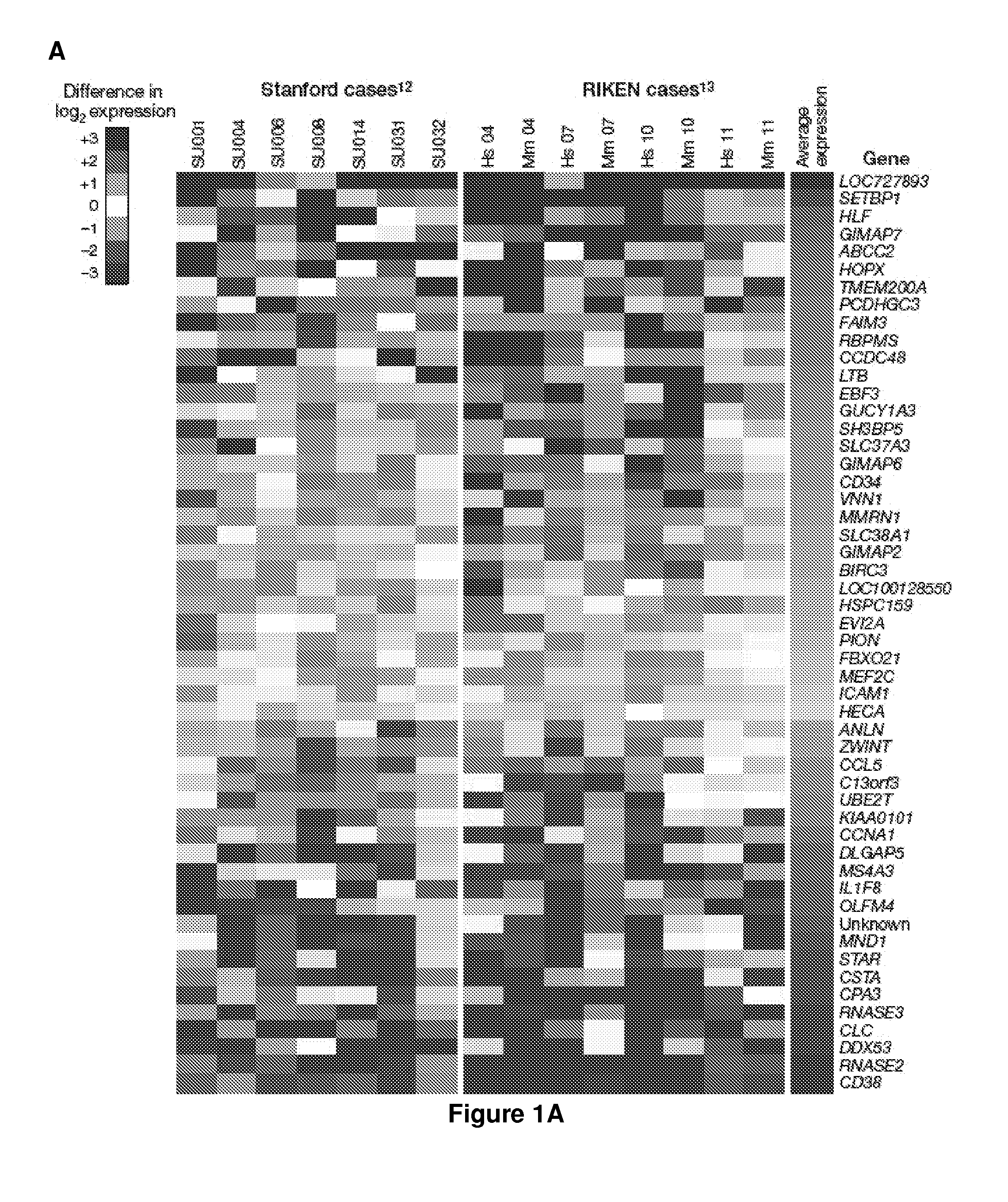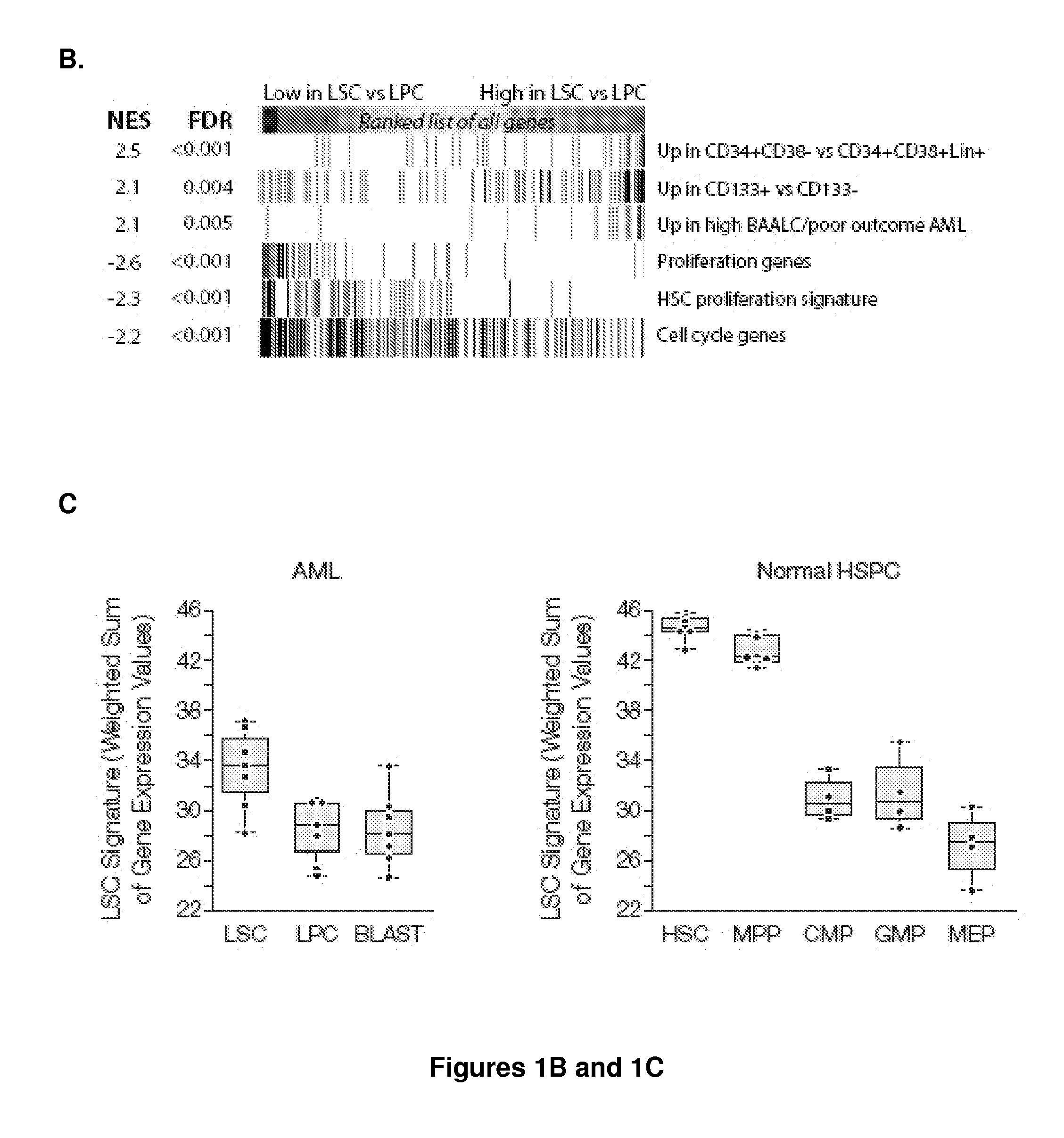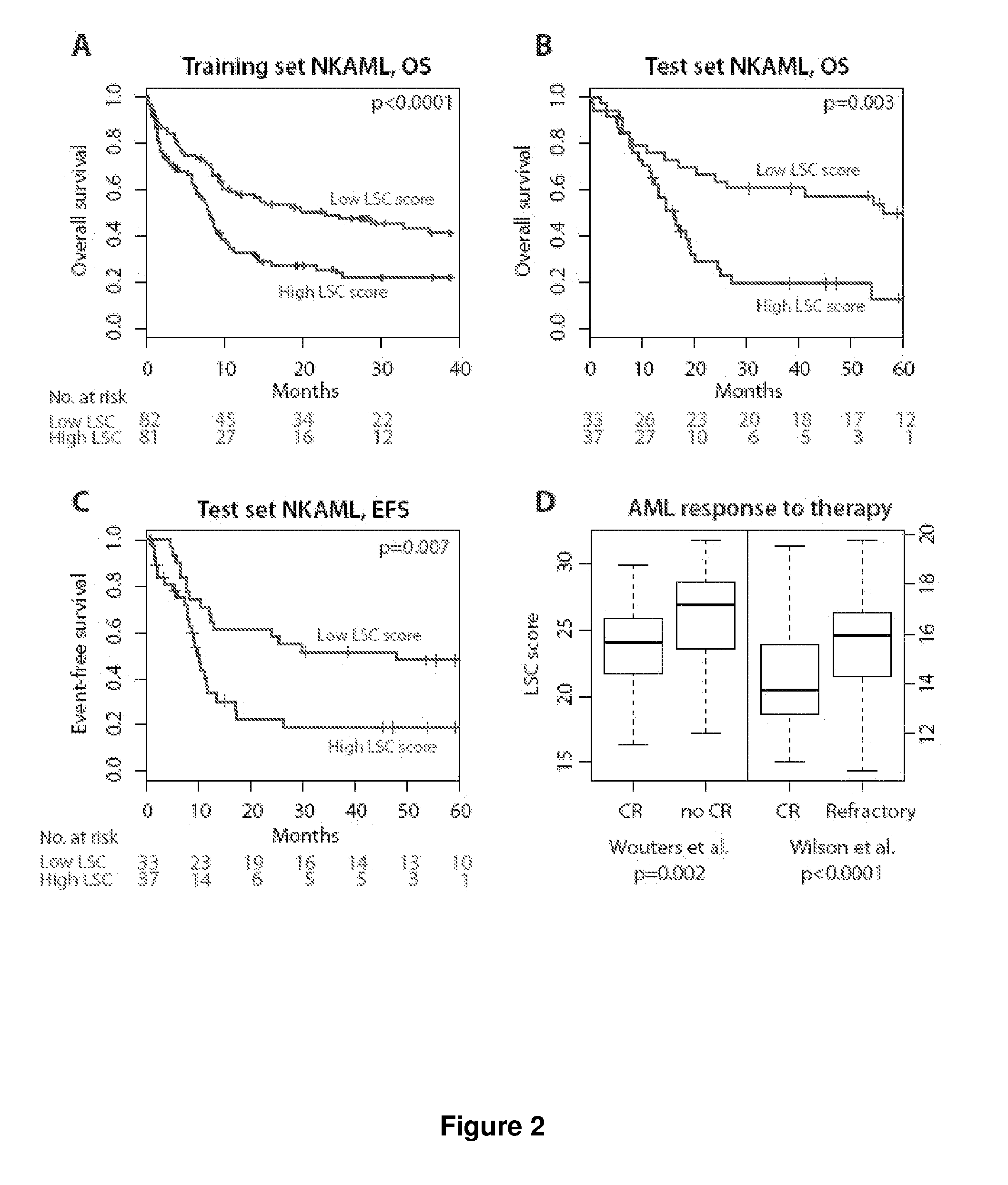Prediction of Clinical Outcome in Hematological Malignancies Using a Self-Renewal Expression Signature
a hematological malignancy and expression signature technology, applied in combinational chemistry, biochemistry apparatus and processes, library screening, etc., can solve the problems of limited risk classification and outcome prediction for patients with hematological malignancies, and the current classification system does not fully reflect the molecular heterogeneity of the disease, so as to inhibit a hematological malignancy, and reduce the expression representation of the lsc
- Summary
- Abstract
- Description
- Claims
- Application Information
AI Technical Summary
Benefits of technology
Problems solved by technology
Method used
Image
Examples
example 1
Background
[0102]A growing body of evidence suggests that specific cancer cell subpopulations possess the ability to initiate and maintain tumors (Jordan C T, et al., Cancer stem cells. N Engl J Med. 2006; 355(12):1253-1261; Reya T, et al. Stem cells, cancer, and cancer stem cells. Nature. 2001; 414(6859):105-111). This model has major implications for the development of novel therapeutic agents (Weissman I. Stem cell research: paths to cancer therapies and regenerative medicine. JAMA. Sep. 21, 2005; 294(11):1359-1366).
[0103]Acute myeloid leukemia (AML) is an aggressive clonal malignancy of the bone marrow characterized by the accumulation of early myeloid cells that fail to mature and differentiate. There is significant support that AML is organized as a cellular hierarchy initiated and maintained by self-renewing leukemia stem cells (LSC) that comprise a subset of the total leukemic burden (Jordan C T, et al. supra; Dick J E. Stem cell concepts renew cancer research. Blood. Dec. 15...
example 2
[0156]Prognostic models for prediction of overall, event-free, and / or relapse-free survival in acute myeloid leukemia (AML) are provided that are based upon the expression of three genes (HOPX, GUCY1A3, and CCL5) in various predictive combinations. These genes are differentially expressed between leukemic stem cells (LSC) and non-tumor initiating cells (see, e.g., FIG. 1), and comprise a measure of LSC activity in AML.
[0157]The models are generally applicable to expression data obtained from any convenient methodology, e.g. microarray analysis, polymerase chain reaction (PCR), transcriptome sequencing, and the like. The prognostic power of this diagnostic test is applicable to both normal karyotype AML (NKAML) and AML with cytogenetic abnormalities. The predictor is prognostic of outcomes independently of other clinical covariates including age, cytogenetic risk, FLT3-ITD, NPM1, and CEBPa mutation status. Several alternative forms of the predictor are also described, for use as a co...
example 3
[0168]Prognostic models for prediction of overall, event-free, and / or relapse-free survival in acute myeloid leukemia (AML) are provided that are based upon the expression of three genes (HOPX, GUCY1A3, and IL2RA). These genes are differentially expressed between leukemic stem cells (LSC) and non-tumor initiating cells, and comprise a measure of LSC activity in AML.
[0169]We identified the core set of LSC-related genes that carry most prognostic weight, and which can be combined into a prognostic assay using qt-PCR which is commonly used in clinical practice. Four existing gene expression cohorts were combined into one set of 1042 patient samples. 773 samples had available outcome data. These 773 were split into ⅔ training and ⅓ test sets. The prognostic power of each candidate gene associated with LSC (our ˜52 together with additional genes mentioned i.e. IL2RA, MSI2) was evaluated by univariate Cox regression in the training set. This analysis was performed by randomly selecting ½ ...
PUM
| Property | Measurement | Unit |
|---|---|---|
| temperature | aaaaa | aaaaa |
| temperature | aaaaa | aaaaa |
| temperature | aaaaa | aaaaa |
Abstract
Description
Claims
Application Information
 Login to View More
Login to View More - R&D
- Intellectual Property
- Life Sciences
- Materials
- Tech Scout
- Unparalleled Data Quality
- Higher Quality Content
- 60% Fewer Hallucinations
Browse by: Latest US Patents, China's latest patents, Technical Efficacy Thesaurus, Application Domain, Technology Topic, Popular Technical Reports.
© 2025 PatSnap. All rights reserved.Legal|Privacy policy|Modern Slavery Act Transparency Statement|Sitemap|About US| Contact US: help@patsnap.com



